Shortlisted, 2018 Vine Awards for
Canadian Jewish Literature (fiction)
This novel traces the life experiences of a once highly successful woman who falls prey to electroshock and subsequently struggles to piece back together her life. Naomi suffers enormous memory loss; additionally, an estrangement from her family of origin that she has no way to wrap her mind around. The novel begins with her wandering the corridor of St. Patricks-St Andrews Mental Health Centre (St. Pukes) faced with the seemingly impossible challenge of coming to terms with the damage done her, as well uncovering the hidden details of her life. It moves back and forth between a relatively happy childhood in the legendary north-end Winnipeg of the mid-1900s and post-ECT adulthood in Toronto. An exceptionally kind man named Ger who befriends Naomi comes to suspect that important pieces of the puzzle of what befell her lurk beneath the surface of writing in a binder of hers, which comes to be known as Black Binder Number Three. What Naomi progressively comes to do, often with Ger’s help and just as often with the help of a very different and eerily similar sister named Rose, is find ways to do justice to her life and to the various people in it. Filled with a vast array of colourful and insightful characters from a variety of communities—Toronto¹s Kensington Market of the 1970s, the 1970’s trans community, north-end Winnipeg Jewry, and the ingenious and frequently hilarious mad community—this novel sensitizes us to the horror of electroshock, takes us to new levels in our understanding of what it means to be human, and, in the process, leads us to question the very concept of normalcy.
“Bonnie Burstow’s The Other Mrs. Smith is a first rate, emotionally powerful novel. Her writing is vivid and personal, spiced with pungent Jewish expressions. The scenes with Winnipeg’s North End have a life-like, photographic intensity, also important social history. The portrayal of Jewish family relatives is very personally involving, and some of the psychiatric inmates are so sharply sketched, they bring back my own early memories.”
—Don Weitz , Toronto psychiatric survivor, social justice activist, and co-editor of Shrink-Resistant
“Forced electroshock left me bereft of my life’s purpose, until I spoke out. Though the testimonial facts of the struggle up from brain damage are mine and those of other survivors, this powerful story and the sheer artistry of its handling is all Bonnie. A gem of a novel and a “must-read.””
—Connie Neil, author of Aftershock: Raised Consciousness Crumbles SHAM Psychiatric System
“Burstow’s writing style is clear, stark, and informative, allowing the abundance of characters the space to become fully animated. She moves the reader back and forth in time metaphorically strengthening our ability to consider the history of electroshock. Read it to meet the characters and be in these rich Canadian locales. I encourage you to read it to consider how we can better the human condition.”
—Spencer J. Harrison, artist, activist, educator at OCAD University

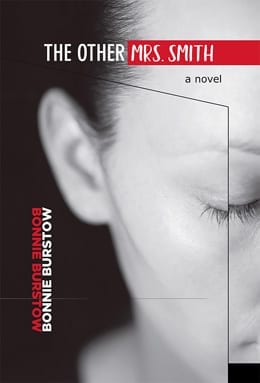
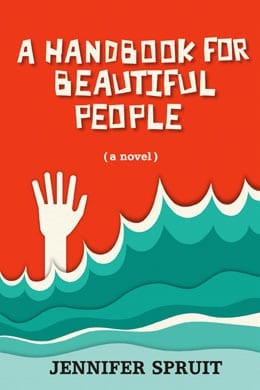
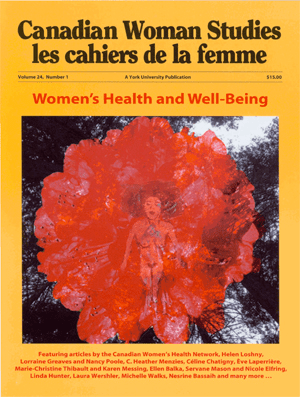
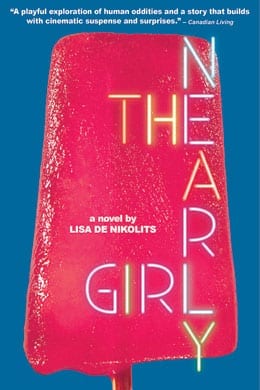
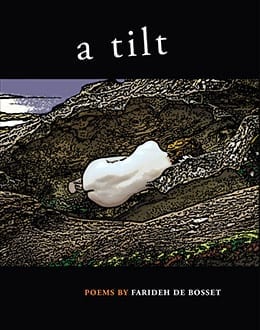

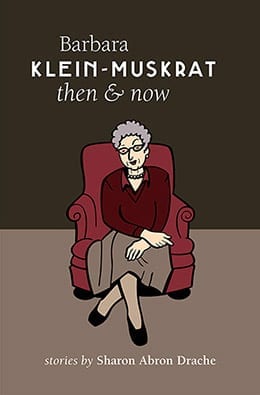
inannaadmin –
The Other Mrs. Smith by Bonnie Burstow
reviewed by I.A. Abramovic – April 23, 2018
I recently read Bonnie Burstow’s The Other Mrs. Smith. Such a strong and emotional novel that I believe we can all relate to in some way, as it is ultimately about human connection.
Bonnie has such a uniquely powerful writing style. The story instantly comes to life, as do the characters.
I connected with the many Jewish expressions shared throughout the story and the trans character, who happened to be one of the main characters in the novel.
He was also one of my favourite characters and one of the most charming and captivating characters, in my opinion. Trans people are rarely portrayed in novels in this way. Usually when there is a trans character in a book it is because the book is focused on trans identity. It is not often that trans people are portrayed in such an easy and normalized way. Bonnie did an incredible job at creating this wonderful character and bringing him to life in her powerful novel.
inannaadmin –
The Other Mrs. Smith by Bonnie Burstow
reviewed by Jim Gottstein, JD
Mad in America – April 13, 2018
https://www.madinamerica.com/2018/04/book-review-other-mrs-smith-bonnie-burstow/
Bonnie Burstow, Associate Professor at the University of Toronto, is a well-known and oft-published critic of institutional psychiatry who has published many non-fiction books and articles. Dr. Burstow has been a student and friend of psychiatric patients for over four decades, I believe, and is one of those non-psychiatric survivors who “gets it.” In The Other Mrs. Smith, Dr. Burstow chose to use the fiction format, presumably because she felt it was the best way for readers to understand what it is like to experience electroshock and deal with the aftermath. In this she succeeds spectacularly.
The protagonist is Naomi Cohan (Nomi) and the book starts out during her childhood in Winnipeg where she lives with her identical twin sister Rose (Ro) and her labor activist mother and father. They are Jewish and even though not all that religious, their Jewish life is richly described. One suspects this part is largely autobiographical. Many Yiddish words are used and Dr. Burstow helpfully provides a glossary at the end of the book (which I didn’t find in my Kindle until I finished the book). As a Jew, and having a twin sister and two identical twin brothers, I could relate to those aspects. Also, being married to an electroshock survivor, The Other Mrs. Smith resonated with me on that basis as well.
The book is divided into three parts, the first being Naomi’s childhood in the 1940s, the second starting with her waking up after having been electroshocked a number of times in the 1970s, and the third about thirty years later in 2008 where we get to see how things turned out.
Growing up, Naomi is the superstar of the twins with Rose always taking second place in the first part. This is largely reversed after Naomi’s electroshockings. We see that in spite of the inevitable sibling conflicts, the two are incredible close and connected, including telepathically, especially at times of great danger. The telepathy was the most difficult part for me to believe, but my identical twin brothers were also very connected, especially when they were younger. My twin is not identical and we never had that sort of connection.
In addition to her mother and father, both interesting characters, one of the other main characters in the book is Gerald (Ger), Naomi’s ex-husband’s first wife, who is transgender and a great friend to Naomi. The other main characters are ex-husband Earl, Naomi’s daughter Ruth, and Jack, the psychiatric patient who became Naomi’s great helper and friend in the hospital and held a radio to his ear to cope with the voices.
While Earl, who authorized shocking Naomi, was a bit of a jerk, Dr. Burstow does not really make him a villain. He believed the doctors when they said Naomi needed to be shocked and then drugged when she was experiencing postpartum depression.
The really compelling part of The Other Mrs. Smith is its description of what it is like to wake up from being electroshocked and try to deal with the accompanying massive memory loss. In fact, The Other Mrs. Smith opens up with a description of the binders of notes assembled from what Naomi was able to find out about her life in the years before electroshock. The binders function as her memory.
Dr. Burstow resisted the temptation to have Naomi’s life totally destroyed by electroshock. There is no doubt that Naomi’s life was substantially and seriously diminished from the electroshock, but she was able to build a successful post-shock life, hard as it was. This is a fine and hard line to walk and Dr. Burstow does a good job. The Other Mrs. Smith ultimately is a story of triumph over electroshock. The other side is also briefly covered with someone who had managed to escape psychiatry being recaptured and subjected to electroshock again, ultimately choosing to commit suicide rather than endure more electroshock.
Another thing The Other Mrs. Smith does well is make the other psychiatric inmates real people, most likable, some not.
The third part of The Other Mrs. Smith, which took place in 2008, has our protagonist becoming an activist and recruiting other psychiatric survivors as they mount an effort to get electroshock abolished. The very real organization Coalition Against Psychiatric Assault (CAPA) is involved although the names have been fictionalized.
I think it has been at least twenty years since I read a novel and I am glad I read The Other Mrs. Smith. I hope it garners a wide audience so that the general public can gain some idea of the horror of electroshock.
inannaadmin –
The Other Mrs. Smith by Bonnie Burstow
reviewed by Avid Reader
Bonnie Burstow’s beautiful novel, The Other Mrs. Smith, continues to resonate with me.
We follow Naomi, who has been deeply impacted by memory loss, caused by Electroshock (ECT). This captivating character, gives us a lively and very human portrayal, of living in the world with memory impairments. Relying on index cards to make sense of things, Naomi develops a sophisticated system of self-accommodation, as she negotiates the expectations of ‘normalcy’ imposed by people around her. We come to understand her lived reality, and to love those characters, who just take her where she is at.
The novel brings us a perspective on supporting those who are psychiatrized. Naomi’s husband Earl, was counting on ‘being in the right,’ when he had Naomi committed. The Novel has us question the ‘ordinary story.’ What if the place we turn to for help, actually-causes serious harm? Like Naomi’s friend Gerald, perhaps it is better to tell our loved ones to get as far away as possible. Although Naomi’s life, is at times fragmented and disoriented, over time, she comes to ‘perceive the world,’ more insightfully than ever.
I appreciate this rare glimpse behind ‘Asylum’ walls, where Naomi finds humanity and solidarity amongst inmates, within an institution they call “St. Pukes.” A diverse group of people gather there. Jack an Aboriginal man, becomes a leading ally, as they are caught together, within the institution walls. His strength and insight, guide her throughout. The characters she finds there, provide a roadmap, giving clues about how to navigate the Institution. It also brings unforgettably amusing moments of inmate resistance.
At a time where psychiatric institutions, have become normalized as the common singular solution, to all our existential-dilemmas and traumas, this modern-day version of “One Flew Over the Cuckoo’s Nest,” provides a refreshing and lively new perspective. Naomi is profoundly impacted by Electroshock. ECT is at once an old story, and a present day one. “The Other Mrs. Smith,” gives us a feminist view of psychiatry, where women are given ECT, at much higher rates, contextualizing this within patriarchal power-relations. In a poetic moment, Naomi turns her gaze back on the doctors at “St. Pukes,” seeing it with renewed insight.
The novel has memorable LGBTQ, Aboriginal, and homeless characters. Gerald, a trans-person, is a solid Ally, and an important character, in the novel. He gives us missing clues about her history and story, which have been erased by ECT. His lovely warmth and humour gives solid ground, in the midst, of the chaos. A modern-day family is forged, to support Naomi as she raises her child, (together with Gerald’s child, Les). It has insightful scenes, conceptualizing family, and community differently. The Novel inspires a hopeful image, giving a rich space where marginalized people continually re-invent themselves, and resist institutional oppression.
Naomi shares vivid childhood memories, growing up Jewish in North-End Winnipeg in the midst, of labour and class-struggles. We are brought close to Naomi’s family, as they pull together, to understand anew, their daughter’s (new) way of being in the world. In a reversal of fortunes, in contrast to the life of her childhood, where Naomi excelled academically, (i.e. on her way to becoming a film director or critic), her twin sister Rose, (always academically slow) now becomes an affectionate source of support and wisdom. The novel includes a beautiful portrayal of the strong connection between twin sisters. These siblings, aware of each other, intuitively ‘feel’ each other’s pains; the bonds between them are at times severed, but also healed.
The Other Mrs. Smith, also gives us a bit of a mystery to be solved, which becomes a theme throughout. This creates an intriguing element in the novel. Towards the end, we gain insight into a troubling truth about Naomi, and the institution, which caused her brain damage. Her daughter Ruth, plays a vital role in this discovery. This portrayal shows that the impacts of the damage caused by ECT are multi-generational and cause devastating harm. Ruth eventually gains a new connection with her mother, and finally also heals.
This novel is poetic, poignantly powerful, and very human! It is ever-hopeful that people can come together to understand and appreciate each other differently. It made me cry and laugh, through the intimate connections with Naomi, and her lovely community of friends and family! A portion of the novel takes place in Toronto, which makes this novel feel, all-the-more personal to me. This special novel, has a compassionate connection, giving humanity to Naomi’s lived reality; it is a wonderful, insightful literary work.
Read and enjoy!!
inannaadmin –
The Other Mrs. Smith by Bonnie Burstow
reviewed by J.A. Tavares
I’m impressed. This book has taught me a lot about myself. The prose is witty and irreverent, a first-person writing style that is unique and unencumbered. The characters are developed in a realistic sense – this reader felt these were people known to me. I resonate with the protagonist, the sense of family found in strangers, and the twins – ohhh, the twins!!! I’ve smiled, laughed, cringed, and felt the heart of my soul pang with recognition at some of the travails we all face. A human face put on the nameless, countless members of our society that have seen the dark side of establishment psychiatric practice. The sad truth this novel reveals: we have an elephant in the room that no one is talking about. I thought electro-shock therapy was a relic of the past. I highly recommend this novel – it takes an issue that should be on the collective table, presenting it with honesty, never holding back the more deleterious aspects of an outrageous medical malpractice. It is rare that something so informative is enjoyable. Make a cup of tea, get your favorite blanket, curl up, and enjoy – it’s that good.
inannaadmin –
The Other Mrs. Smith Will Shock and Move You
The Other Mrs. Smith by Bonnie Burstow
reviewed by Tom Sandborn
Vancouver Sun – February 9, 2018
http://vancouversun.com/entertainment/books/the-other-mrs-smith-will-shock-and-move-you
Talk about beginning your story “in medias res!”
“An eerie smell in the air, as if a tin plate had been accidentally left on a red hot burner. Bloated bodies dressed in white floating over me. Something cold and sticky on my temples. Something rubbery in my mouth. A band pressing in around my head …. Straps wrapped around my legs, shoulders, torso. … Can’t move a muscle. No way to breathe.”
This painful passage occurs in the opening pages of Bonnie Burstow’s The Other Mrs. Smith. Her protagonist, Naomi, is experiencing ECT (electroconvulsive therapy) in a Toronto mental hospital, and Burstow employs the classic narrative strategy of beginning her story “in the middle of things.”
Burstow, an academic and activist based at the University of Toronto, has been a prominent critic of medical model psychiatry and ECT for years.
This could, at first blush, seem like unpromising material for a novel. Whatever their position on the public debates about ECT, the average reader might be forgiven if she thought an anti-ECT polemic told from the perspective of someone whose memory has been hollowed out by the controversial procedure would not work as fiction. Such a reader would be wrong.
The Other Mrs. Smith is a compelling novel that invites the reader to join Naomi in her efforts to recover from the harms done to her by ECT and to reclaim the life, family and memories that had been effectively burn out by the bolts of electricity shot through her brain during this treatment. (Many readers will be surprised to learn that ECT is still being used in Canada, but by one estimate over 15,000 Canadians every year endure this questionable “therapy.”)
Unlike many who try to use prose fiction to make a political/sociological point, Burstow never makes her characters stand-ins for abstractions. My particular favourite among the book’s richly imagined cast of characters is Gerald, a kind and generous trans man who was, as “the other Mrs. Smith,” the first wife of Naomi’s husband before coming out as trans. In many ways, Gerald is the moral centre of this complex novel, but he is not the only nuanced and memorable character.
Like Mordecai Richler’s classic, Barney’s Version, The Other Mrs. Smith succeeds in telling a long and complex narrative through the lens of a damaged mind and memory. This book is a literary tour de force and a persuasive call on readers to consider the ethical implications of ECT. Highly recommended.
inannaadmin –
Women face life-altering challenges in these new reads
The Other Mrs. Smith by Bonnie Burstow
reviewed by Sarah Murdoch
Toronto Star – January 12, 2018
https://www.thestar.com/entertainment/books/reviews/2018/01/12/women-deal-with-pressure-in-this-five-pack-of-novels.html?cq_ck=1515683068659
Noni’s three journals tell the story of her life – growing up in the 1940s and ’50s in Winnipeg’s north-end Jewish community; enduring, barely, memory-zapping electroshock therapy and dulling medication in Toronto in the 1970s; concluding around 2010 when Noni finds comfort and a degree of reconciliation within a community of survivors. The Other Mrs. Smith shimmers with outrage. Bonnie Burstow, whose non-fiction titles include Psychiatry and the Business of Madness and Radical Feminist Therapy, established an “antipsychiatry” scholarship at OISE in late 2016.
inannaadmin –
A Great Contemporary Feminist Canadian Novel
The Other Mrs. Smith by Bonnie Burstow
reviewed by QuietCourage
49th Shelf – January 2018
https://49thshelf.com/Books/T/The-Other-Mrs.-Smith
As a reader, I want to be moved and changed by a piece of writing, by complex characters that offer me a new understanding about life. As a writer, I look to be offered examples of writing that help me become a better one. With the book, I wasn’t disappointed. It offered both.
To be honest, I am pretty amazed at how an accomplished academic professional such as Bonnie Burstow can shift gears into such rich and poetic prose that draws the reader into a collection of complex, original characters that unfold through a mysterious evolving plot that has all kinds of twists and turns. Without giving too much away here, the novel offers us a beautiful and tragic view of one brilliant woman’s life story shifting between her time living in two diverse Canadian cities; Winnipeg and Toronto. She moves us back and forth through time, offering readers a sobering account with grace, humour, dignity, and tenderness.
It is a beautifully crafted feminist novel– a real page-turner that takes the reader on an emotional ride through the protagonist’s experience as an electroshock survivor. Naively, like so many of us, I had no idea people were even still be treated with it, never mind how damaging it is for one’s memory.
Besides its feminist theme, it also holds space for issues of various marginalized Canadian communities from Indigenous peoples and the homeless, to the trans community. However, the underlying lesson the author offers here goes beyond the labels and categories we’ve created among us and down into to the bones of what it means to be human. Yes, we fight for what we believe in, we do our own work, we follow our passion and we stand up for injustice but also–ultimately, this book reminds us about acceptance too. It offers us a message about the great paradox of life we all must recognize sooner or later; we all experience great suffering and great joy. Life is tragic and beautiful. We will shed big tears of both kind and it’s all ok. Perhaps it is when we come to truly allow a space for both, when we don’t cling to our ideas about how things should be for us– we find our peace.
inannaadmin –
The Other Mrs. Smith by Bonnie Burstow
reviewed by Carla Gillis
Now Magazine – December 22, 2017
https://nowtoronto.com/art-and-books/books/bonnie-burstow-the-other-mrs-smith/
(excerpt from the review)
Burstow’s views on the efficacy of psychiatry, diagnosis and treatment are worth paying attention to. It’s hard to deny that we live in an overmedicated society. That many psychiatrists take a short view rather than a long view of mental health, and wield an unhealthy amount of power. That psychiatry is big business, and treatment often doesn’t get to the source of a patient’s anguish. That far too many women, people of colour and queer folks have been unfairly pathologized.
It’s worth noting that Burstow made the news last year after successfully establishing the Bonnie Burstow Scholarship in Antipsychiatry, given to an OISE thesis student doing research in that field. It’s the world’s first such award. She told NOW that she hoped the scholarship would “spur alternative ways of arranging society so that we aren’t inventing diseases or brain-damaging people, and there is a greater acceptance of difference.”
Renée Knapp –
The Other Mrs. Smith by Bonnie Burstow
Canadian Journal of Disablity Studies, Vol. 8.4 – June 2019
Excerpt:
Burstow’s feminist revolutionary vision in The Other Mrs. Smith will not let the reader rest easy after finishing the novel…The relationship among her characters is a meticulous roadmap for communities to address their differences amongst and within themselves by first eradicating psychiatry and then solving/addressing their individual and collective problems or differences through care, love, cooperation, acceptance, and accountability.